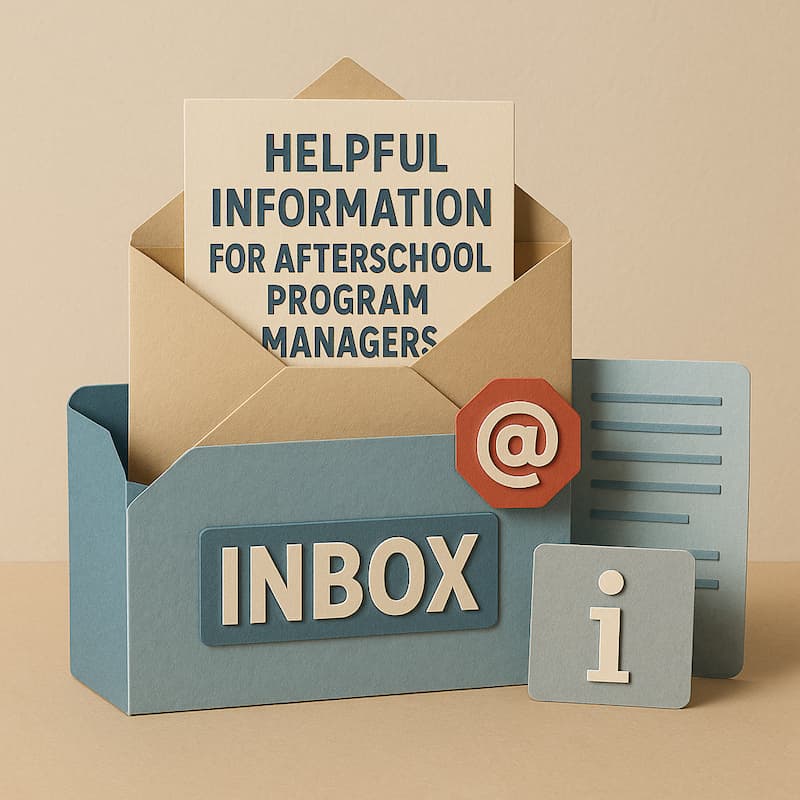Directors managing the Expanded Learning Opportunities Program (ELOP) often face a myriad of challenges, from balancing time constraints and paperwork to addressing staffing issues. The complexity of ensuring compliance with ELOP program requirements can be daunting, particularly given the intricacies of the California Education Code and the need to align with specific guidelines for expanded learning opportunities. This article aims to provide practical tips and tools for efficient ELOP program management, helping you streamline compliance efforts to free up time and reduce stress in elementary school and middle school settings.
Practical Tips for Effortless ELOP Management
Meeting ELOP Staffing Ratios and Qualifications
Adhering to the mandated staff-to-student ratios is a major concern for the success of any ELOP. According to the California Education Code Section 8483.4, different program types, whether focused on academic support or enrichment, require specific ratios to ensure quality and safety. The general ratio is 1 staff member per 20 students, while TK/K groups require 1 staff member per 10 students. Staff should possess relevant educational qualifications, including degrees in education or child development. Prior experience in educational services or similar roles is beneficial. Certifications in CPR/First Aid and other relevant areas are often mandatory.
To recruit and retain qualified staff, offer competitive salaries, provide opportunities for ongoing training and career advancement, allow for flexible scheduling, and collaborate with local organizations and utilize volunteers.
Curriculum Development and Alignment
Aligning program activities with ELOP curriculum guidelines is essential for providing engaging and effective learning experiences. The curriculum should be designed to offer a mix of academic support and enrichment programs that cater to diverse student needs, including English learners. Incorporating project-based learning and interactive sessions can keep students engaged. Key elements to include in the curriculum are academic support in subjects like math, reading, and science, enrichment programs such as physical education, arts, and career technical education, and specialized programs for English learners and students with special needs. Utilizing frameworks from 21st Century Community Learning Centers (21st CCLC) and accessing curriculum guidelines and sample lesson plans from the California Department of Education can aid in program planning.
Attendance Tracking and Reporting
Accurate attendance tracking is vital for securing ELOP funding and ensuring compliance. The California Department of Education mandates stringent procedures for data collection and reporting. Attendance data directly impacts funding allocations, and accurate records are essential for audits. Steps to streamline attendance tracking include establishing clear protocols for early release and daily attendance recording, using digital tools to log attendance and minimize manual errors, and implementing systems for digital check-in/out to streamline the process and reduce errors.
Tools like Attendly can automate attendance tracking and report generation, reducing the administrative burden on school staff. Attendly’s features include mobile attendance tracking, automated reporting, simple communication across channels, and multilingual support.
Leveraging Technology for Efficiency
Incorporating technology into ELOP management has a significant impact on efficiency. Attendly offers comprehensive solutions for automating tasks and improving overall program management. By leveraging Attendly, school districts can ensure they meet all ELOP program requirements without spending excessive time creating reports. Attendly reduces administrative workload, minimizes errors, frees up resources to improve program quality, and enhances compliance and efficiency.
Compliance and Reporting
Ensuring compliance with ELOP guidelines is crucial for securing funding and avoiding penalties. Key compliance requirements include:
- Program Offering and Access : Local educational agencies (LEAs) must offer ELOP to all unduplicated TK-6 students and provide access to any who request it.
- Program Duration and Timing : Provide a minimum of nine hours of combined instructional time and ELOP activities per instructional day and at least 30 non-school days.
- Funding and Fiscal Management : Properly manage funds based on the prior year P-2 classroom-based average daily attendance in grades TK-6 and Unduplicated Pupil Percentage (UPP).
- Attendance Tracking and Reporting : Accurately track daily attendance and implement early release policies.
- Continuous Quality Improvement (CQI) : Regularly assess program quality and gather feedback from students, families, and staff.
Streamline ELOP Management
Streamlining ELOP compliance offers numerous benefits, including reduced administrative workload, improved accuracy in reporting, and enhanced program quality. Attendly stands out as a valuable tool in this regard, providing a comprehensive solution for automating ELOP management tasks. By leveraging Attendly, school districts can ensure they meet all ELOP program requirements efficiently, from accurate attendance tracking to seamless communication with parents. This not only secures necessary funding but also enhances the overall quality of educational services and school programs provided to students.
By focusing on these practical tips and leveraging technology, directors can effectively manage ELOP, ensuring compliance, improving program quality, and ultimately providing enriching learning experiences for all students.








